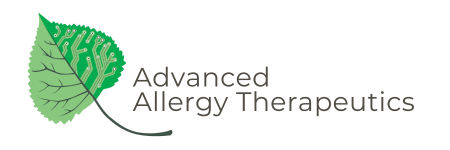AAT DIGITAL SIGNALS
AAT USES PAIN-FREE SIGNALS
To achieve the best results with the AAT therapy, a wide range of substances are required. It’s important to note that any substance or even a component within a substance can cause an inappropriate reaction. Furthermore, since each individual’s reaction to a particular substance may differ, even within the same item, AAT requires an extensive library of substances. Given that some of the substances needed for treatment are impossible to obtain in physical form, a signaling system becomes essential.
AAT utilizes a proprietary digital signaling system that currently represents more than 65,000 substances, making treatment options highly specific and tailored to each individual’s needs. The digital signals are used in place of the actual substances during testing and treatment, offering a safe, effective, and non-invasive exposure method for people suffering with allergy and sensitivity symptoms.

At its core, the AAT treatments prioritize precision. By utilizing digital signals, AAT can identify specific triggers causing inappropriate reactions. This is made possible through the careful organization of the AAT signals into different groups, families, components, and subcomponents. This allows any AAT practitioner to quickly and easily identify which substances or components within a substance are causing an inappropriate reaction.
For example, if someone experiences a headache after consuming chocolate, it may be due to certain components in the chocolate that the body perceives as a threat. These components could include caffeine, cocoa butter, phenols, theobromine, or a specific protein found in chocolate. Identifying and treating the correct components is essential for achieving successful treatment outcomes.
AAT regularly expands the digital library, constantly increasing the number of substances available for testing and treatment. Practitioners around the world also continue to provide new substances based on their own clinical experience and research, contributing greatly to the expansion of the digital library on a regular basis. So, by utilizing digital signals we can offer an unlimited number of substances for treatment purposes.
AAT regularly expands the digital library, constantly increasing the number of substances available for testing and treatment. Practitioners around the world also continue to provide new substances based on their own clinical experience and research, contributing greatly to the expansion of the digital library on a regular basis.
The AAT system utilizes a specialized treatment cuff that can be conveniently placed on any area of the body’s surface to transmit a digital signal for both testing and treatment purposes. While digital signals alone do not possess therapeutic value or directly affect the body, they enable significantly enhanced treatment capabilities.
By utilizing digital signals, the AAT treatment can provide an unlimited range of substances and tailor each treatment to the individual’s unique needs.
Evolution of AAT Therapy: From Physical Samples to Digital Signals
In the early stages of development, AAT therapy relied heavily on physical samples of allergens and various substances, which were brought into contact with the patient’s skin for evaluation and treatment. However, this approach presented several challenges:
-
- Diversity of Substances: The range and number of substances that can provoke inappropriate reactions is far broader than commonly recognized.
- Component Isolation: Treating the actual substance limits the ability to break down, test, and address individual components, which is essential for effective treatment.
- Sample Availability: Many substances, such as the wavelength of sunlight, barometric pressure, and stimuli causing motion sickness, are simply not available as physical samples.
- Internal Reactions: The body can react inappropriately to specific substances that are naturally found or produced within it, making them difficult to obtain for testing.
- Complex Reactions: The body may perceive certain components of a substance as threats. For instance, if eating chocolate leads to a headache, the reaction might stem from caffeine, cocoa butter, phenols, or specific protein molecules within the chocolate. Identifying and isolating these components is crucial for the success of the treatment.
These circumstances necessitated the development of a digital signaling system capable of simulating different substances required for treatment. The AAT system’s digital signal is transmitted from a dedicated treatment cuff that can be conveniently placed anywhere on the body’s surface, replacing the contact with the actual substance. The AAT digital signal simply mimics the actual substance. While digital signals alone do not possess therapeutic value or directly affect the body, they enable significantly enhanced treatment capabilities. Digital signals are essential and invaluable, allowing the AAT therapy to achieve greater precision, improved outcomes and increased patient satisfaction.
What is AAT
The AAT Method
AAT - An Integrative Medicine
AAT Expert System
AAT Assessment Method
AAT Digital Signals
What is an Allergy
Allergies vs Sensitivities
Adapting to Our Modern World
FAQ

© 2005-2025 AAT Business Development Group, LLC | All Rights Reserved | Website by Dion Design Group
